Contents
Is That Bird Real?!
Wondering why Dr. Seuss books and apparel sprout up in stores come February/March? That’s to celebrate children’s author Dr. Seuss, who was born March 2, 1904. His books are filled with an assortment of animal characters — including birds — drawn in a distinct Seuss style, which has been described as falling somewhere between the surrealist movement of the early 20th century and the inspired nonsense of a child’s classroom doodles.
In honor of Dr. Seuss’s birthday, here are some spectacular real-life bird species that look like they belong in a Dr. Seuss book!
Sounds Like A Seuss Bird
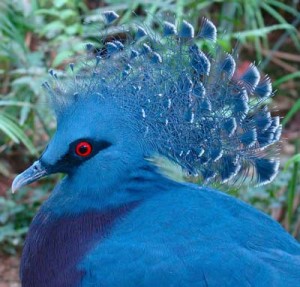 The Victoria crown pigeon (Goura victoria) is spectacular not only because of its eye-catching white-tipped crest feathers, deep blue-gray color and red iris, but by its size.
The Victoria crown pigeon (Goura victoria) is spectacular not only because of its eye-catching white-tipped crest feathers, deep blue-gray color and red iris, but by its size.
This ground-dwelling pigeon, named after the British monarch Queen Victoria (1819-1901), is the largest pigeon species in the world, with an average length of 73 to 75 cm (29 to 30 in) and can weigh over 7 pounds.
Native to the New Guinea region, Victoria crown pigeons can be found in zoos and are indeed a sight to behold. Its call certainly seems like it belongs in a Dr. Seuss book, with its deep ummm or hmmm contact call, a hoota-hoota-hoota-hoota-hoota mating call and a defensive call described as a whup-up, whup-up, whup-up.
Chicken By Seuss?
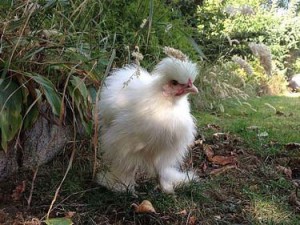 If Dr. Seuss created a chicken, there’s a good chance it would look and feel just like the Silkie chicken. Also referred to as the Silky, the name is apropos as this chicken’s plumage is soft and fluffy — some even say it is like touching silk.
If Dr. Seuss created a chicken, there’s a good chance it would look and feel just like the Silkie chicken. Also referred to as the Silky, the name is apropos as this chicken’s plumage is soft and fluffy — some even say it is like touching silk.
Other unique attributes set the silkie apart, such as black skin and bones, five toes instead of the usual four and blue earlobes. Silkies are said to make good companions because of their friendly and docile nature.
Real-Life Bird Has Cartoon Looks & Sounds
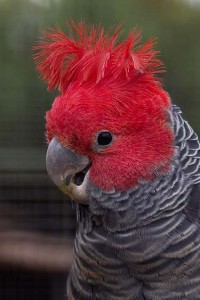
The gang-gang cockatoo’s (Callocephalon fimbriatum) fluffy crest makes this parrot native to Australia almost cartoon like. Males are the red heads in this species, with females having a smaller gray head and crest. Both have scalloping on their body feathers.
The gang-gang cockatoos natural call is not your typical parrot call — it is described as a resembling a creeky gate or the sound of a wine bottle being uncorked!
Another Bird With Seuss Looks
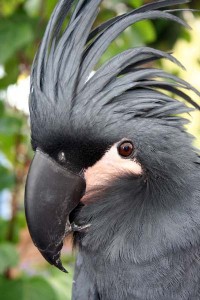
Another cockatoo seemingly “straight out of Seuss” is the palm cockatoo (Probosciger aterrimus), also called the goliath cockatoo or great black cockatoo. This name makes sense, as it is among the largest of all cockatoo species.
This parrot has two prominent features that make it seem more like a caricature than a real-life parrot — its very large beak and its prominent red cheek patches. Its genus/species name, Probosciger aterrimus, is comprised of the Latin word proboscis, which means “long thin nose” and the Latin superlative adjective for ater, which indicates “black” — hence this parrot’s name translates to mean “black [bird] with a long thin nose (beak)”.
Stork By Seuss?
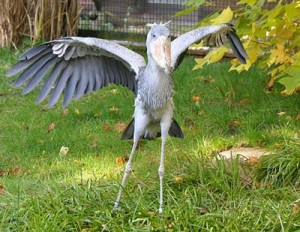
The shoebill (Balaeniceps rex) looks like Dr. Seuss’s attempt at drawing a stork. It’s features are so hard to pinpoint that the scientific community can’t seem to come to a consensus on which taxonomy it belongs to — storks, pelicans or herons.
One thing is for sure, this east Africa native has a bill that is hard to ignore. This bird has been described as statue-like because of its slow movements and tendency to stay still.
The shoebill eats mostly fish and will patiently stalk its prey … then it quickly strikes. They are relatively quiet birds but do have some peculiar sounds … adult birds might moo like a cow, and the “feed me” call of young shoebills is said to sound like a person with hiccups.





